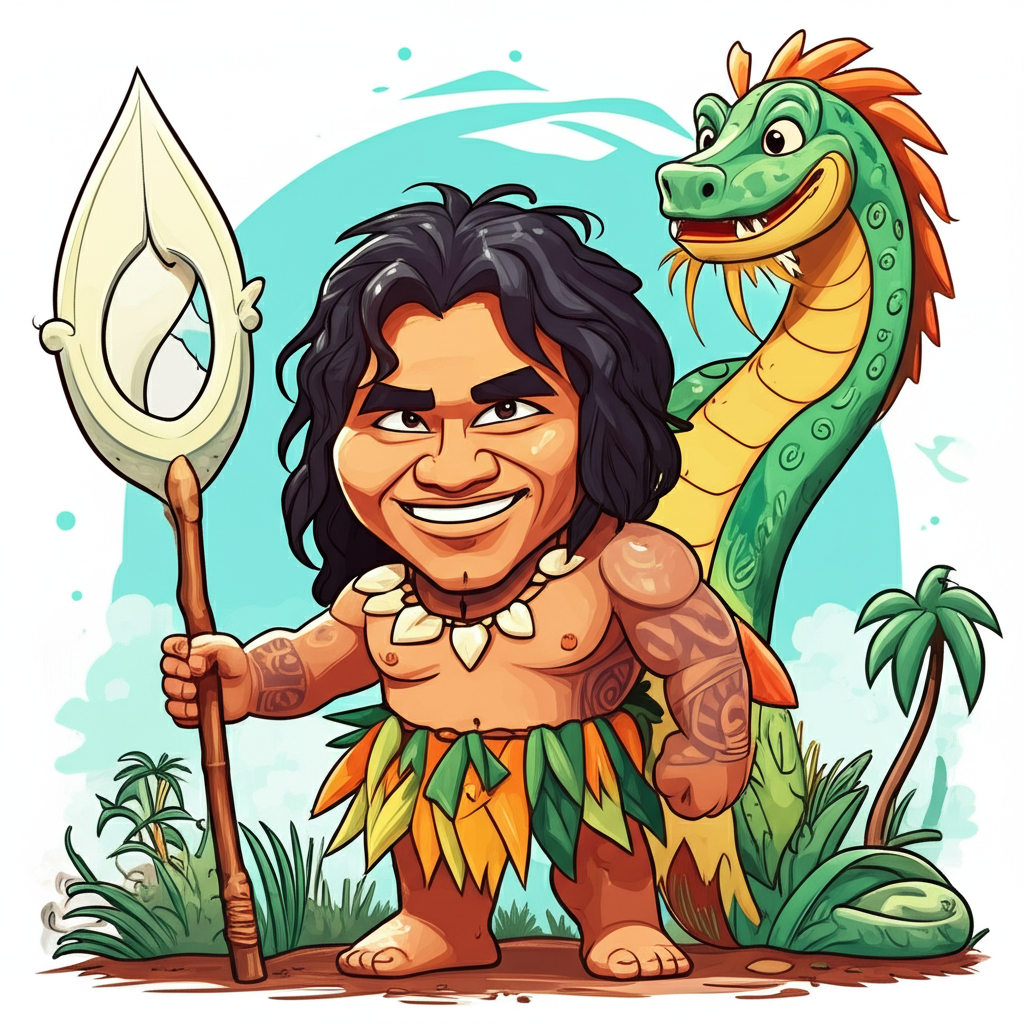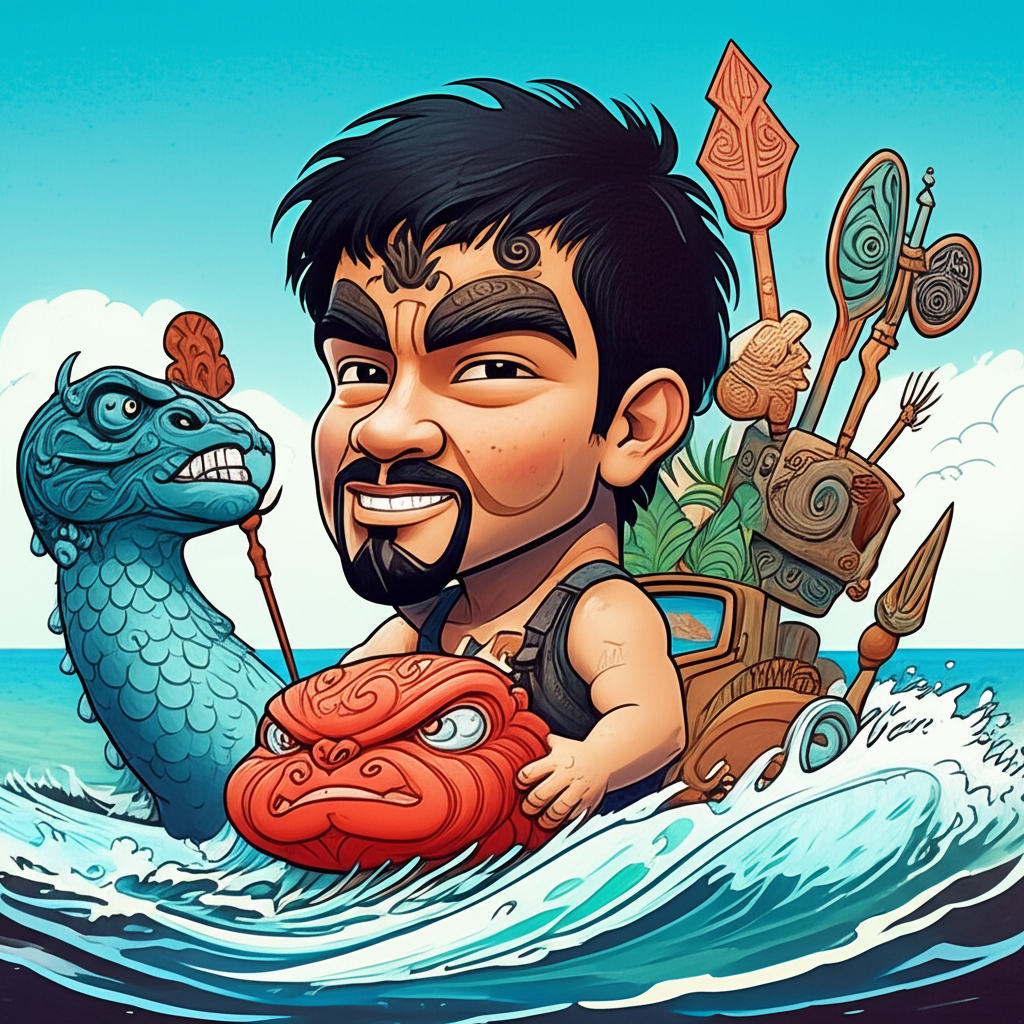
The vast, shimmering expanse of the Pacific Ocean has cradled countless stories, tales woven from the very fabric of the islands and the lives of their ancient inhabitants. Among these are the profound narratives of Polynesia, a rich tapestry of mythology and folklore that speaks of creation, heroism, and the deep connection between humanity and the natural world. The stories of Maui, the trickster demigod, the enigmatic mo’o, guardians of the waters, and the ancestral homeland of Hawaiki, are not divine commandments or historical facts, but rather the imaginative expressions of ancient peoples grappling with the mysteries of their existence. These are traditional tales, passed down through generations, offering a window into a worldview shaped by the rhythms of the sea, the power of the land, and the deep human desire to understand their place in the cosmos.
The cultural era in which these narratives took root was one of profound respect for the forces of nature. For the ancient Polynesian peoples, life was inextricably linked to the ocean and the land. They were skilled navigators, their lives dictated by the currents, the stars, and the subtle shifts in the weather. Their worldview was animistic, seeing spirits and life force in all things – in the rustling leaves of the breadfruit tree, the crashing waves of the ocean, and the soaring flight of the seabird. This was a world where the boundaries between the human, the natural, and the supernatural were fluid, and where elaborate rituals and stories served to maintain balance and harmony. The stories of Maui, the mo’o, and Hawaiki emerged from this environment, serving as explanations for natural phenomena, moral guides, and ancestral connections.
Central to these narratives is the figure of Maui, a demigod of immense power and cunning, often depicted as a mischievous but ultimately benevolent force. He is not a god in the Abrahamic sense, but rather a being born of human and divine lineage, possessing extraordinary abilities. Maui’s symbolic attributes lie in his ingenuity, his courage, and his relentless pursuit of knowledge and betterment for humankind. He is the one who, in some traditions, fished up islands from the ocean floor, harnessed the sun to lengthen the day, and stole fire for humanity. His actions, while often driven by a playful spirit, frequently resulted in significant advancements for his people. He represents the spirit of innovation, the ability to overcome seemingly insurmountable challenges through cleverness and determination.
The mo’o, on the other hand, are creatures of a different nature. Often depicted as lizards or reptilian beings, they are deeply connected to water – rivers, lakes, and the sea. These are not simple animals, but rather powerful guardians, embodying the protective and sometimes fearsome aspects of these vital water sources. Their symbolic attributes are tied to the life-giving and destructive power of water. They can be seen as embodiments of the deep unknown within water, the currents that can both sustain life and claim it. They represent the respect and caution that ancient peoples felt towards these powerful natural elements, acknowledging their dual nature. They were sometimes seen as protectors of sacred places or as beings who could bestow blessings or inflict curses, depending on human behavior and respect shown.
The concept of Hawaiki is perhaps the most foundational element, representing the ancestral homeland, the place from which the Polynesian peoples migrated across the vast ocean. Hawaiki is not a single, geographically fixed location in the way we understand modern countries. Instead, it functions as a mythical origin point, a spiritual homeland that exists in both the physical and spiritual realms. It symbolizes the ancestral roots, the source of identity, and the enduring connection to one’s lineage. The journey to Hawaiki, or the memory of it, represents a deep-seated human longing for belonging and origin, a reminder of the courage and resilience of their ancestors who undertook epic voyages. It is the spiritual anchor that binds scattered island communities together.
The narrative of Maui often involves his interactions with these primal forces. Imagine Maui, a young, energetic figure, perhaps standing on the precipice of a volcanic island, the salty spray of the Pacific on his face. He might be gazing at the vast ocean, a glint of mischief in his eye, contemplating his next grand exploit. Perhaps he decides that the days are too short, that his people toil endlessly under the relentless sun. With his divine strength and cunning, he sets off to capture the sun itself. The journey might be fraught with peril, navigating treacherous waters, encountering formidable sea creatures, and perhaps even facing the wrath of elemental spirits. He might use a magical fishhook, fashioned from the jawbone of an ancestor, to snag the sun as it begins its descent, holding it captive until the world is bathed in sufficient light.
In another tale, Maui might be tasked with appeasing a mo’o guarding a vital freshwater spring. The mo’o, a magnificent, scaled creature, its eyes like obsidian, might demand a tribute or a demonstration of respect. Maui, ever the clever one, might offer a song, a dance, or a clever riddle, seeking to understand the mo’o’s essence and to negotiate passage or access to the water. The story would emphasize the importance of understanding and respecting these powerful natural guardians, rather than simply conquering them. The narrative would paint a vivid picture of the island environment – the lush vegetation, the sound of dripping water, the humid air, and the primal presence of the mo’o.
The symbolism embedded within these stories is rich and multifaceted. Maui’s exploits can be interpreted as representing the human drive for progress and the mastery of the natural world, albeit with a healthy dose of respect for its power. His ability to overcome obstacles symbolizes resilience and the potential for human ingenuity to improve the quality of life. The mo’o, as guardians of water, speak to the vital importance of this resource and the respect it commanded. Their dual nature reflects the inherent duality of nature itself – its capacity for both nurturing and destruction. Hawaiki, as the ancestral homeland, serves as a potent symbol of identity, continuity, and the enduring strength of kinship and cultural heritage. It speaks to the human need for a sense of belonging and a connection to the past.
In the modern era, these ancient narratives continue to resonate, finding new life in various forms of cultural expression. They are explored in literature, often as foundational myths influencing contemporary storytelling. In film and television, elements of these legends are sometimes woven into fantasy genres, offering a glimpse into a world where myth and reality intertwine. Video games draw inspiration from the adventurous spirit of Maui and the mysterious nature of the mo’o, creating immersive worlds. In academic circles, these myths are studied within the fields of anthropology, folklore, and cultural studies, offering invaluable insights into the beliefs, values, and social structures of ancient Polynesian societies. They serve as a testament to the enduring power of human imagination and the universal human quest to understand our origins and our place in the world.
It is crucial to reiterate that these narratives are traditional stories, born from the cultural heritage and imaginative spirit of ancient peoples. They are not to be considered factual accounts or divine revelations. As Muslims, we recognize that only Allah (God) is the true Creator and Sustainer of all that exists, and that any form of worship or devotion is due to Him alone. The stories of Maui, the mo’o, and Hawaiki offer a fascinating glimpse into the worldview of past cultures, showcasing their understanding of the natural world and their deep-seated need for meaning and connection. They remind us of the richness of human heritage, the power of storytelling to transmit knowledge and values, and the enduring fascination with the tales that echo across the vast, blue canvas of our world. These narratives, when understood in their proper context, enrich our understanding of human history and the diverse ways in which people have sought to make sense of their existence.





